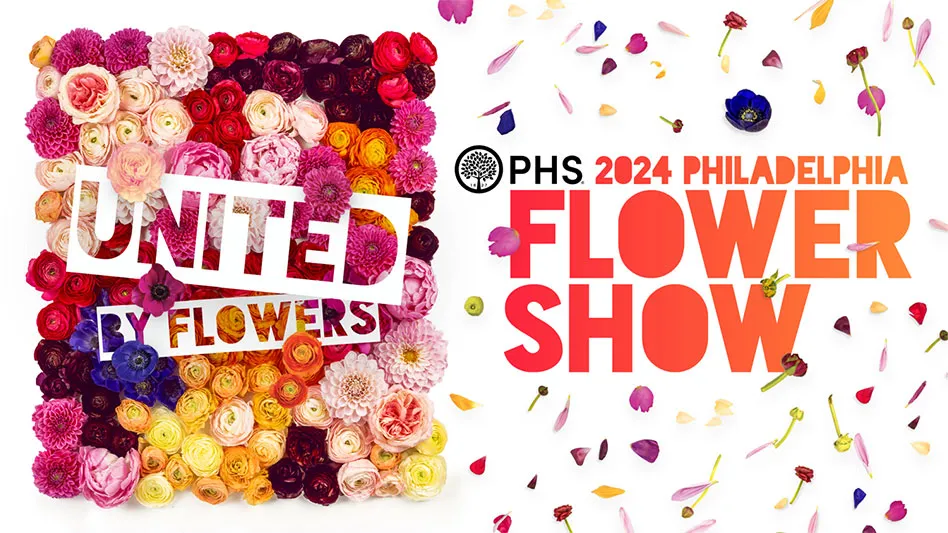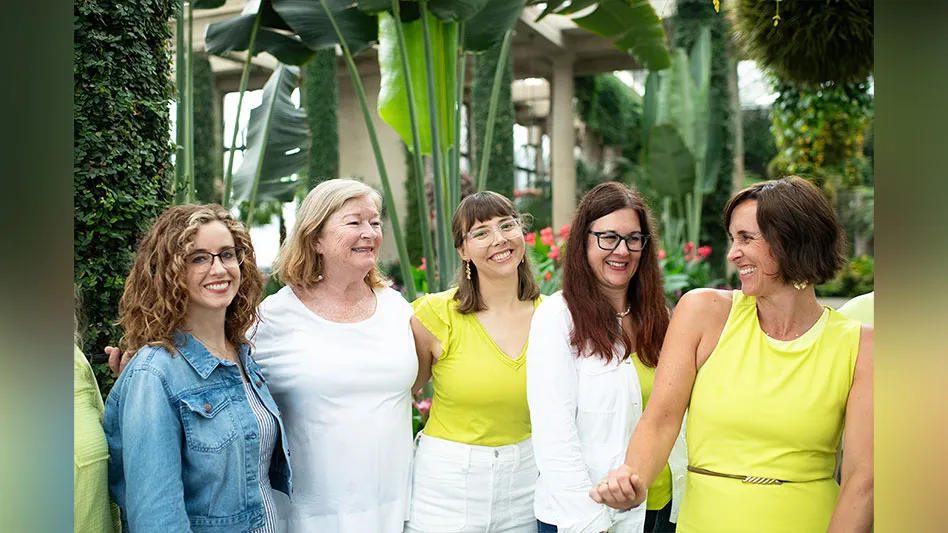
Before the 2017 Tropical Industry Plant Exhibition (TPIE) officially kicked off, the Florida Nursery, Growers and Landscape Association (FNGLA) offered a few tours for growers and retailers. There was also a special tour organized for garden writers and GWA: The Association for Garden Communicators. The day trip included tours of both private, invite-only properties and public gardens used for research. While each stop had its own unique setting, focus and feel, all had one thing in common – unusual plants that are both native and from far-flung places across the world that you can’t see anywhere else in the U.S. arranged and planted in inspirational, beautiful ways. Here are a few highlights from our journey.

Montgomery Botanical Center
The 120-acre Montgomery Botanical Center was described as an “old-school arboretum” by some on the tour because of its focus on the display and preservation of palms and cycads. The nonprofit botanic garden focuses on conserving and researching rare species of the plants from Madagascar, Haiti, Mexico, Guyana, Belize, Brazil, the Bahamas and more, and educating the surrounding community about their importance. During our visit, Dr. Patrick Griffith, executive director, showed us a wide range of rare palms, including a 14-year-old Acrocomia aculeata from Puerto Rico with menacing, sharp spikes coming out of its base. We also saw conservation efforts in practice with one of the rarest palms in the Americas, Attalea crassispatha. Because of deforestation in Haiti, there are less than a few dozen of these left according to Griffith, and 12 grow at Montgomery. The center is sending seed to Haiti to try and recover the species. There are also Attalea cohune palms on the property, which have fronds that grow up to 33 feet long. Dr. Griffith referred to Gaussia gomez-pompae as “palms of the future” because of how fast they grow. We also saw the opposite end of the spectrum with the 34-year-old Coccothrinax ekmanii, which was about 6 feet tall but had an intricate design on its trunk.

Costa Farms Trial Gardens
Although we didn’t get a behind-the-scenes look at tropical plant production at Costa Farms, which grows more than 1,500 varieties of houseplants, we did have the opportunity to tour Costa’s plant trial grounds to get a sneak peek of varieties that are slated for 2017, 2018 and 2019. Participating breeders with plants in the trial gardens can monitor their varieties regularly, as Costa’s team shares weekly data with photos from its row beds. They also recently added a potted showcase to test how container combinations perform. There’s also an All-America Selections annual trial bed, one of more than 100 AAS trials implemented across the U.S.


The Kampong
A striking banyan tree (Ficus benghalensis) stood at the entrance of The Kampong, which was once the home of horticulturist Dr. David Fairchild, who planted the tree in 1925 and introduced 30,000 plant species and varietals to the U.S. throughout his lifetime. Over the years, aerial roots that hang like willow tree branches have slowly developed into woody trunks, resulting in the giant towering tree that, because of its size and location near the road, is difficult to truly capture and photograph. The property is on the National Register of Historic Places, and features varieties from Southeast Asia, Africa, India, and Central and South America, to name a few. It is also the only National Tropical Botanic Garden in the continental U.S., and houses courses for university and college students. Notable plants include candle fruit, peanut butter fruit, cocoplums and more than 50 varieties of mango. Plants large and small captivated the attendees’ attention, including the tough, drought- and wind-tolerant Allspice tree.

R.F. Orchids
While the fact that Florida has the most native orchids compared to any other state in the continental U.S. may not be surprising, Robert Fuchs, president of R.F. Orchids, shared a tidbit that many on our tour did not realize — 49 states in the U.S. have native orchids; Hawaii is the only state that does not. Fuchs, who joined his family’s business in 1970 and restored the nursery after his father experienced health issues and passed away the year before, gave us a history of the property, which had to be rebuilt after Hurricane Andrew destroyed most of the property except for the house on the grounds in 1992. There was no evidence of this destruction during our visit, however. Fuchs showed us a range of orchids, from tiny Oncidium to giant Cattleya, which were displayed on tree trunks and branches that towered over beautiful gardens. We also got to peek into growing operations and see plants other than orchids on the property, including a vanilla orchid and a Zombie palm, (Zombia antillarum), which is native to Haiti and has a very distinct look, as it’s covered in spiny leaf sheaths.


Patch of Heaven Gardens
Patch of Heaven Gardens has elements that are rare and unusual not only in the U.S., but worldwide. It features 11 acres of native, old-growth tropical hammock forest, and the owners are growing several varieties of cacao commercially. Pine rock-land, tropical gardens and historic statues of exotic animals also adorn the 20-acre property established by the Matheson family in the ‘60s and now owned by Bruce and Joyce Chesney. During our visit, we learned more about cacao production — it takes 11 years for the trees to fully mature and produce a lot of fruit, they need an understory for optimal growth, they’ll keep fruiting if it’s 65 degrees or more and it takes about 40 pods to make 1 pound of chocolate. Midges pollinate the trees, and they do not use chemicals in production. The grounds are full of surprising and beautiful features, including a hand-sculpted Lychee tree root from Bali at the entrance of the tropical hammock that has carvings of birds, fish, turtles and more, and a walkway lined with banana trees with a shallow, narrow pool of water at the center of the path. Euphorbia, bromeliads, orchids, ferns and a stunning Royal Poinciana are just some of the featured plants on the grounds.


Explore the May 2017 Issue
Check out more from this issue and find you next story to read.
Latest from Garden Center
- Weekend Reading 5/17/24
- GardenComm 2024 Annual Conference registration is open
- Landmark Plastic celebrates 40 years
- Proven Winners introduces more than 100 new varieties for 2025
- Weekend Reading 5/10/24
- The Family Business, Part 2: Agreeing (and disagreeing) on capital investments
- Registration opens for Darwin Perennials Day
- Weekend Reading 5/3/24





